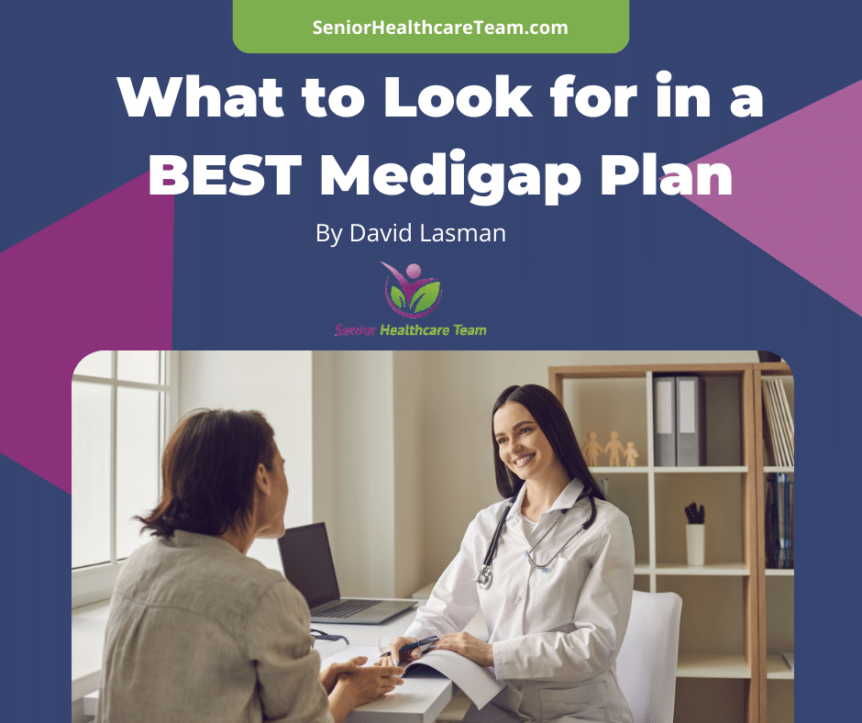As individuals approach the age of 65 and become eligible for Medicare, the prospect of selecting the right Medigap plan becomes a crucial decision in ensuring comprehensive healthcare coverage. Original Medicare, consisting of Part A (hospital insurance) and Part B (medical insurance), provides valuable coverage, but it doesn’t cover all healthcare costs. This is where Medigap plans, also known as Medicare Supplement plans, come into play. To make an informed decision and secure the best Medigap plan, individuals need to consider various factors. In this article, we’ll explore key elements to look for when choosing a top Medigap plan.
Understanding Medigap Plans
Medigap plans are private insurance policies designed to fill the coverage gaps left by Original Medicare. These plans are standardized across most states, identified by letters A through N, each offering a different set of benefits. While the basic benefits of each plan remain consistent, the cost and additional perks can vary between insurance providers.
What to Look for in a Top Medigap Plan
- Coverage Adequacy
The primary purpose of a Medigap plan is to provide additional coverage that complements Original Medicare. It’s crucial to assess your healthcare needs and choose a plan that adequately addresses them. While all Medigap plans offer coverage for basic benefits, some plans go above and beyond by providing additional services such as foreign travel emergency coverage or preventive care not covered by Medicare.
- Cost Considerations
Medigap plans come with monthly premiums, and costs can vary significantly between providers. It’s essential to strike a balance between coverage and affordability. Compare premiums across different insurance companies offering the same plan to ensure you’re getting a competitive rate. Additionally, consider how the plan handles cost-sharing, such as copayments, coinsurance, and deductibles.
- Provider Network
Unlike Medicare Advantage plans, Medigap plans don’t have provider networks. You can see any healthcare provider that accepts Medicare. This flexibility is a significant advantage, as it allows you to choose doctors and specialists without worrying about network restrictions. When assessing Medigap plans, confirm that the plan allows you the freedom to see any Medicare-approved healthcare provider.

- Company Reputation and Stability
The reputation and financial stability of the insurance company offering the Medigap plan are crucial factors. Look for companies with a solid track record of customer satisfaction and a high financial rating. This information is typically available through independent rating agencies, providing insights into the company’s ability to meet its financial obligations and provide excellent customer service over the long term.
- Rate Increase History
Understanding how a Medigap plan’s premiums may change over time is vital for budgeting and financial planning. While some rate increases are inevitable due to factors like inflation and rising healthcare costs, significant and unpredictable spikes can strain your finances. Research the rate increase history of prospective insurance providers to anticipate how premiums may evolve in the future.
- Enrollment Periods and Underwriting Policies
Medigap plans have specific enrollment periods, and it’s crucial to be aware of these timelines. During the initial open enrollment period, which starts six months before the first day of the month you turn 65 and enroll in Medicare Part B, you have guaranteed issue rights. This means insurance companies cannot deny you coverage or charge higher premiums based on your health status. Understanding these enrollment periods and any potential underwriting policies is essential for securing coverage without unnecessary complications.
- Additional Benefits
While Medigap plans primarily focus on filling gaps in Medicare coverage, some plans offer additional benefits. This may include coverage for vision and dental care, fitness programs, or discounts on health-related products and services. However, there is a tradeoff for these additional benefits, and the tradeoff is that these plans typically have inferior medical and hospital coverage, limited provider networks and much larger out-of-pocket costs. Consider whether having some extra perks is worth the lack of medical and hospital coverage and the higher costs and copayments.
- Customer Service and Accessibility
Access to reliable customer service is crucial, especially when navigating the complexities of healthcare coverage. Research customer reviews and testimonials to gauge the level of satisfaction among current policyholders. Additionally, assess the accessibility of customer service channels, such as phone support, online chat, and email, to ensure you can easily get assistance when needed.
- Stability of Benefits
Medigap plans are standardized, meaning the benefits provided by each plan type (e.g., Plan F or Plan G) are consistent across different insurance companies. However, it’s important to be aware of any changes to Medicare policies that may affect your plan’s benefits. Some plans, such as Plan F, are no longer available to new Medicare beneficiaries, but existing policyholders can keep their coverage. Stay informed about any potential changes that may impact your Medigap plan and be prepared to reassess your options if necessary.
- State-Specific Considerations
Medigap plans are regulated at the state level, and certain factors, such as available plans and pricing, can vary by location. Be aware of any state-specific considerations that may impact your decision. State insurance departments can provide valuable information about Medigap plans available in your area and offer guidance on selecting the most suitable option.
Conclusion
Choosing the right Medigap plan requires careful consideration of various factors to ensure comprehensive coverage that meets your healthcare needs and financial priorities. By evaluating coverage adequacy, cost considerations, provider flexibility, company reputation, rate increase history, enrollment periods, additional benefits, customer service, stability of benefits, and state-specific considerations, you can make an informed decision that provides peace of mind and security in your healthcare journey. Remember that the right Medigap plan for you may not be the same as someone else’s, so take the time to assess your individual needs and preferences before making a decision.
Prescription medication can eat up a lot of your healthcare budget, so it’s smart to make sure you have the best coverage to meet your needs. This will explain how to find that plan: Understanding Medicare Part D – Prescription Drug Plans
By David Lasman – “Ask Medicare Dave” | President – Senior Healthcare Team
wwww.SeniorHealthcareTeam.com | 866-333-7340
Selecting the right healthcare plan through Medicare can be overwhelming and downright stressful. Senior Healthcare Team is a nationwide resource that provides guidance and support about Medicare to seniors at no cost to them and helps them to choose the most suitable insurance plan tailored to their specific needs and budget. Our goal is to educate and empower our clients to make the best decisions regarding their healthcare and clear up the confusion of Medicare. At Senior Healthcare Team, we aren’t partial to any one insurance company. Our loyalty is to our clients and our mission is to provide them with the best healthcare options at the very lowest cost.
To learn the truth about Medicare, watch all our FREE Medicare tutorial videos by clicking here.

